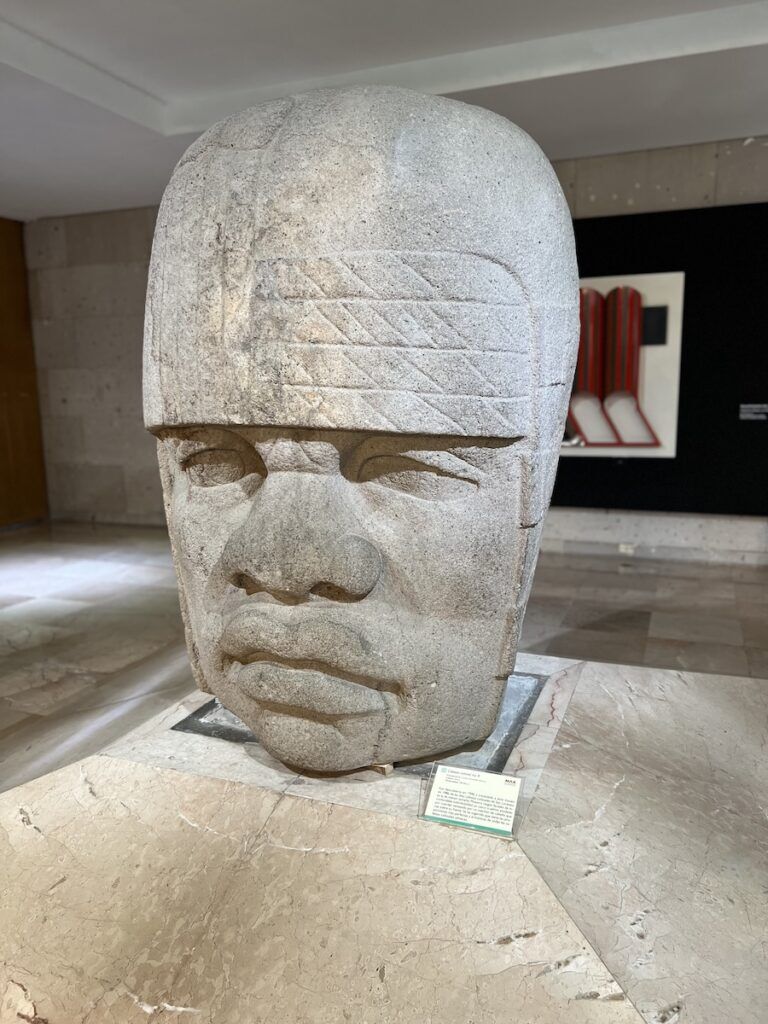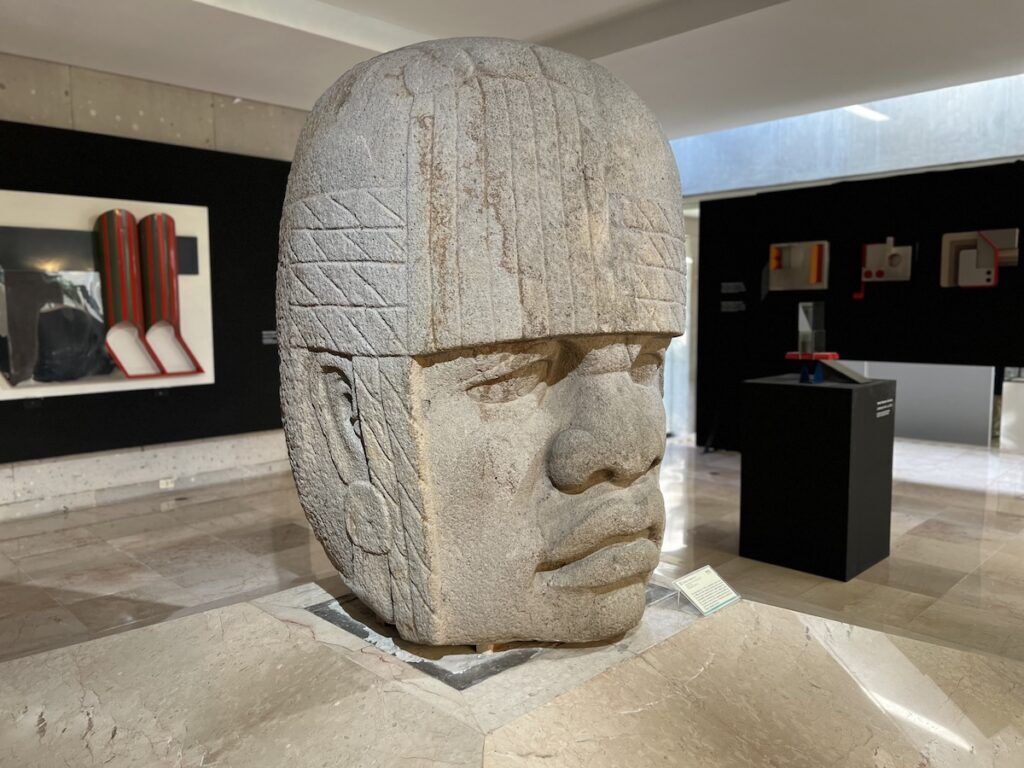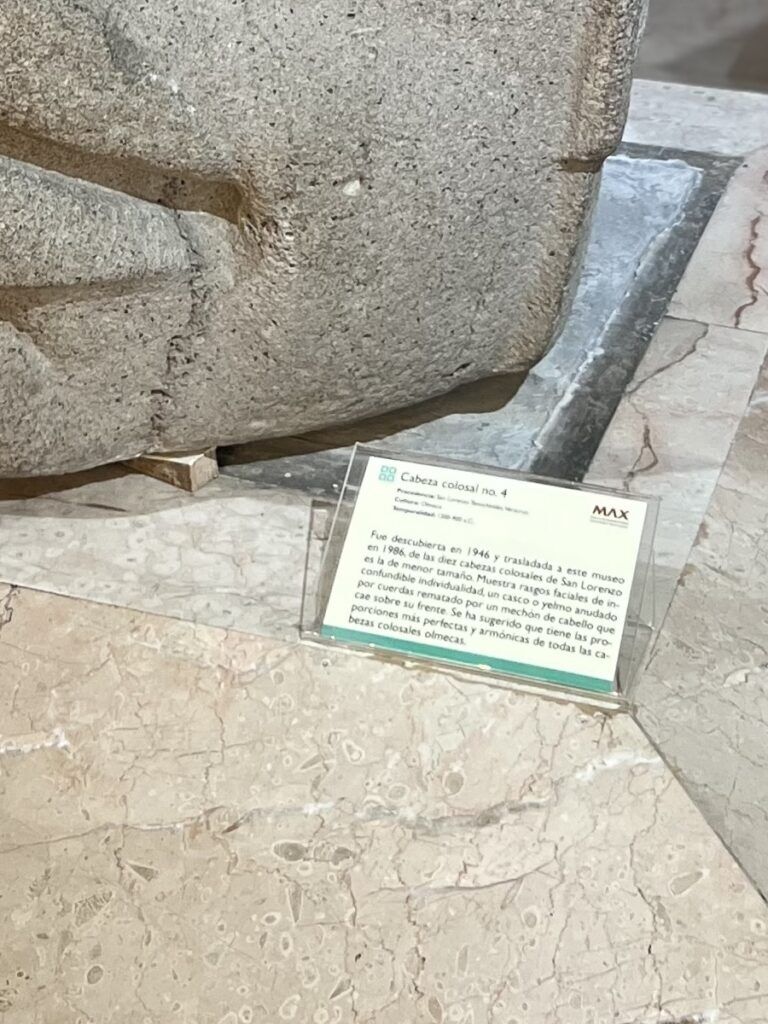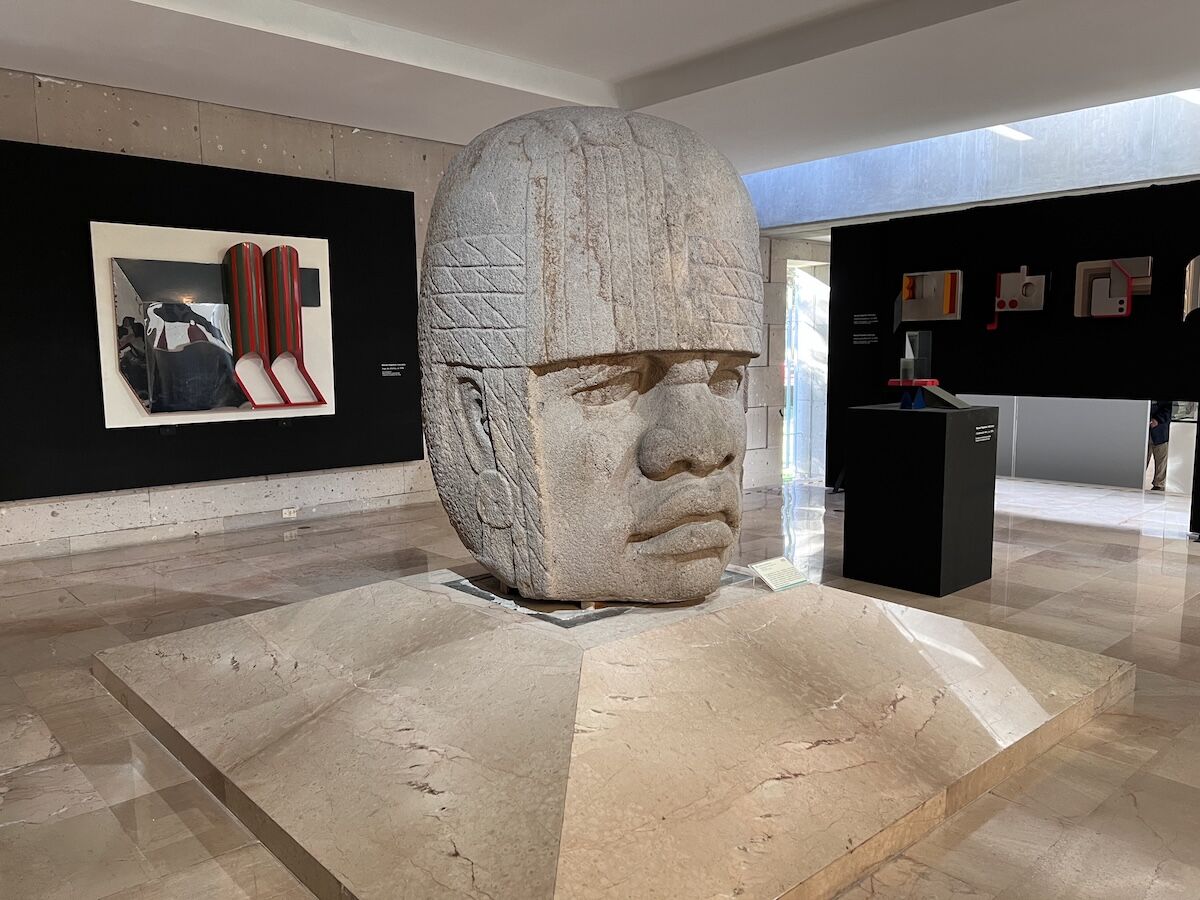3D Tour: Olmec Head, San Lorenzo Monument 4
Olmec Head: San Lorenzo Monument 4
Location: Museo de Antropología de Xalapa, Veracruz, Mexico
Size: 1.78 metres (5.8 ft) high by 1.17 metres (3.8 ft) wide and 0.95 metres (3.1 ft) deep
Weight: 6 tons
Age: Middle Preclassic (1200–900 BCE)
Originally Found: San Lorenzo Tenochtitlán, Veracruz, Mexico
Material: Basalt
Get up close with one of the most impressive relics of the ancient Olmec world with a 3D scan. San Lorenzo Monument 4 isn’t just a massive carved head—it’s a glimpse into a civilization that thrived over 3,000 years ago. Originally unearthed at San Lorenzo, this striking basalt sculpture still leaves people wondering: Who was he, and what story does he tell?

A Glimpse into Olmec Power
San Lorenzo Monument 4 isn’t just a giant carved head—it’s a striking reminder of the Olmec civilization’s influence, strength, and authority. Its immense size, detailed craftsmanship, and sheer presence suggest it was created to honor a ruler or warrior of significant importance, possibly even a legendary figure.
A Face Full of Questions
With its broad nose, full lips, and helmet-like headgear, this head has an unmistakable and commanding presence that feels almost lifelike. While some believe it is a portrait of a real Olmec leader, others argue that it may have been an idealized or symbolic representation of power, leaving historians with more questions than answers.hether it represents a real person or a more symbolic figure of power is still a mystery that keeps historians debating.
Moved Without Machines
The Olmecs somehow transported this enormous stone from a distant volcanic site using only manpower, river routes, and incredible ingenuity. Without wheels, metal tools, or domesticated animals, they managed to carve, shape, and move this massive sculpture, showcasing their advanced engineering skills and determination.


San Lorenzo Monument 4, Olmec Head 3D Scan
Explore the 3D model in detail using this interactive viewer—rotate, zoom, and pan to view from every angle:



A Piece of the Past
Monument 4 isn’t just an artifact—it’s a fascinating key to unlocking the story of one of Mesoamerica’s earliest and most influential civilizations. Every new study, excavation, and analysis helps historians piece together a clearer picture of who the Olmecs were, how they lived, and the lasting impact they left on the cultures that followed.
From the Visitor Sign
Colossal Head No. 4
It was discovered in 1946 and transferred to this museum in 1986. Of the ten colossal heads from San Lorenzo, this is the smallest. Its facial features show unmistakable individuality, with a helmet or knotted hairstyle tied by cords falling over its forehead. It has been suggested that this head has the most perfect and harmonious proportions of all the Olmec colossal heads.


Let us know what you think about this Olmec head. Have you seen it in person or want to see it? Let us know in the comments below.
Otherwise, check out the other Olmec 3D Scans
Part of the MEC Luke Caverns Olmec Tour
